“Do it yourself if you want it done right” is an old and widely circulated proverb, usually expressing trust in one’s ability to complete a task, believing that only by doing it oneself can the job be done as expected. Everyone knows that surgery requires teamwork and standardized procedures, yet in extreme situations, self-surgery becomes a desperate measure. Throughout modern history, there have been numerous such stories. Today, we list 14 individuals who performed surgery on themselves, all of whom were incredibly brave.
1. Leonid Rogozov, Who Removed His Own Appendix
In April 1961, 27-year-old Soviet surgeon Leonid Rogozov was part of an Antarctic expedition. During the expedition, he developed appendicitis. There were no other doctors in the team, and due to the severe weather, they could not evacuate by plane or return to Russia by sea, which would take nearly 40 days. Faced with this predicament, Rogozov was in extreme pain, describing it in his diary as “a blizzard raging in my soul, like a hundred hyenas howling.” To survive, he decided to perform an appendectomy on himself.
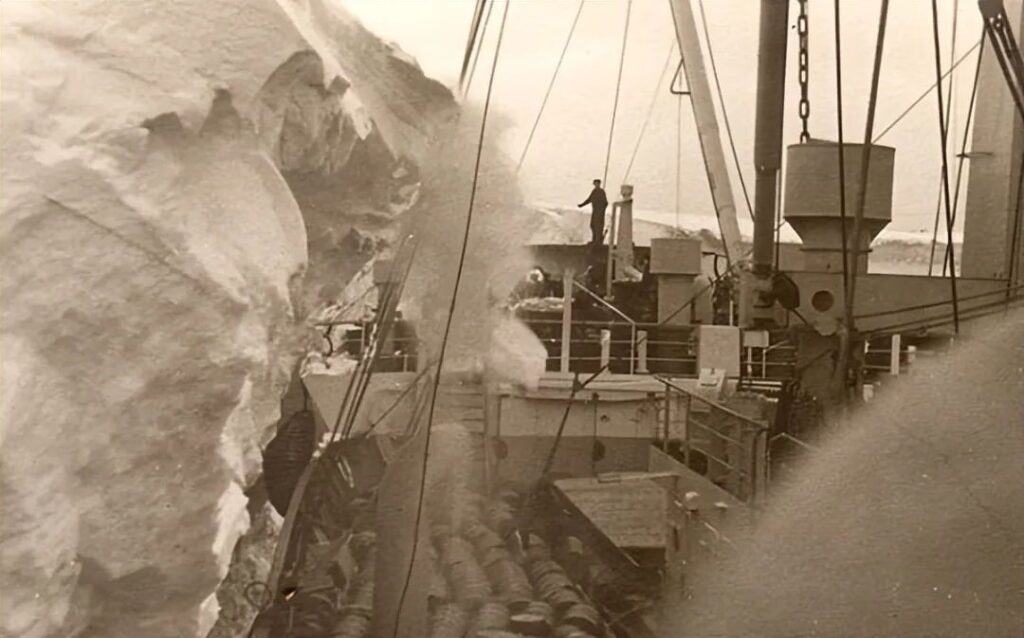
If you were stuck in Antarctica and needed to perform surgery on yourself, what would you do? Rogozov first obtained necessary permission from Moscow via remote communication, then enlisted three colleagues as assistants to pass him surgical tools and use a mirror to help him see the procedure. He also instructed them to inject him with adrenaline if he lost consciousness and to perform artificial respiration if necessary. After injecting local anesthetic Novocain into his abdomen, he began the surgery.
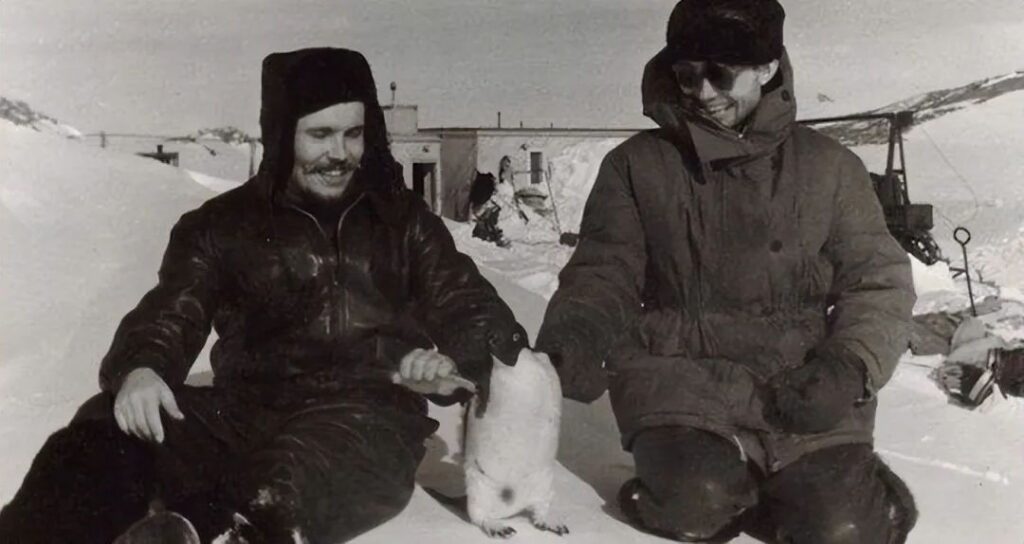
The procedure was not smooth; Rogozov had to abandon the mirror and rely entirely on touch. Eventually, he successfully located and removed his appendix, suturing the wound, which took about two hours. Two weeks later, Rogozov recovered and returned to work. Since then, to avoid similar emergencies in Antarctica, some countries, like Australia, require doctors heading to the continent to undergo elective appendectomies before departure.
2. Robert Kerr McLaren, Who Removed His Own Appendix
Rogozov was not the only one to remove his own appendix. Australian veterinary surgeon Robert Kerr McLaren also performed an appendectomy on himself without anesthesia in the jungles of the Philippines in the 1940s. Additionally, Dr. Evan O’Neill Kane is another example of someone who operated on his own appendix.
3. Gouverneur Morris, Who Inserted a Whalebone into His Own Urethra
Gouverneur Morris was one of the main authors of the U.S. Constitution, known as the “Penman of the Constitution.” He served as a U.S. Senator and Ambassador to France. However, he also has a less-than-glorious record: he was the only Founding Father to insert a whalebone into his own urethra.
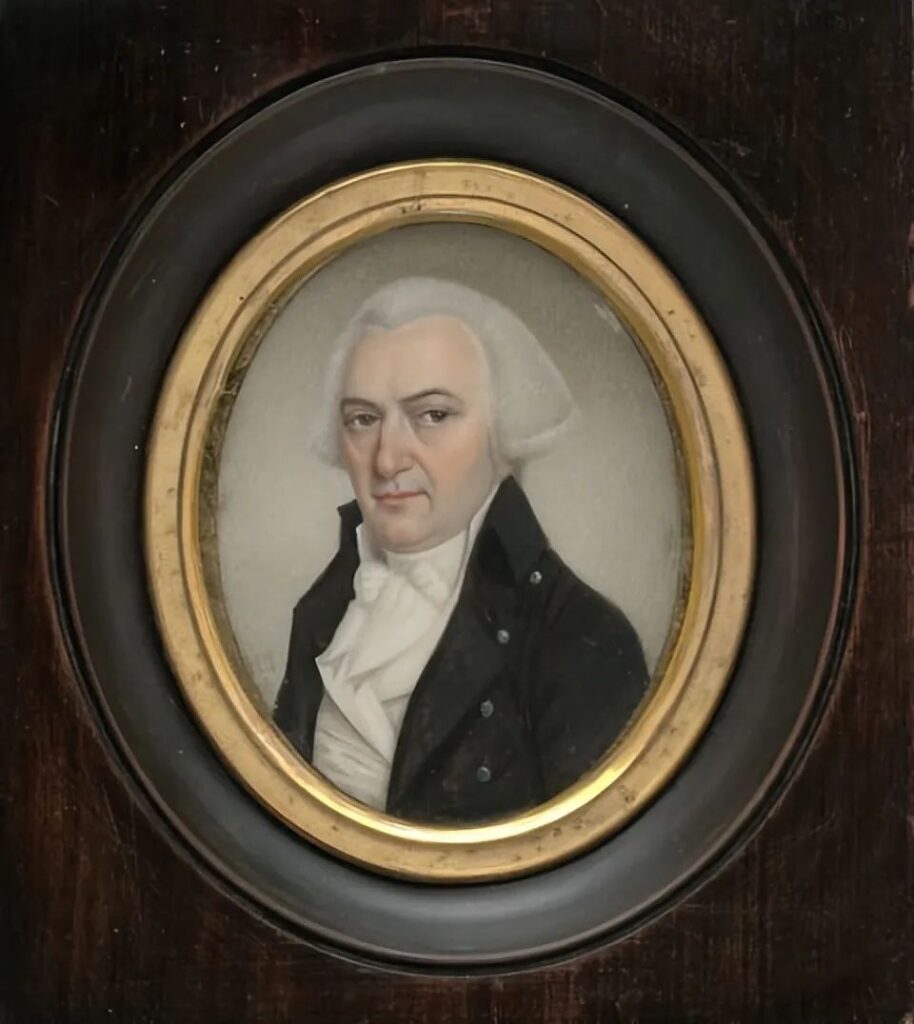
In 1816, Morris’s health deteriorated, suffering from gout and possibly a urinary tract infection, which made urination difficult. Anxious, he tried to clear the blockage by inserting a piece of whalebone, likely from his wife’s corset, into his body. He had previously used hickory wood successfully, so he thought it would work this time as well. However, this attempt led to an infection, and he passed away on November 6, 1816.
4. Aron Ralston, Who Amputated His Own Arm
In 2003, 27-year-old climber Aron Ralston was exploring a canyon in Utah when his right arm was pinned by a dislodged boulder. With no cell phone signal and limited food and water, he used his only free hand to slowly amputate his trapped arm with a Swiss Army knife. Before cutting, he had to break his bones, and during the amputation, putrid gas escaped from the wound.

In media interviews, Ralston said, “In my mind, that arm was no longer mine. It was useless, and it was going to kill me. I had to get rid of it quickly. When I picked up the knife, I felt very calm and composed.” After amputating his arm, Ralston used his climbing gear to stop the bleeding and climbed out of the 65-foot canyon.
This harrowing experience was turned into the 2010 film “127 Hours,” named after the event of his being trapped and self-rescue.
5. Charles-Auguste-Clément de Lapeyronnie, Who Removed His Own Bladder Stone
Bladder stones are extremely painful, and the surgery to remove them several hundred years ago was a torture. Doctors would insert their fingers into the patient’s rectum to locate the bladder, then make a small incision in the perineum (the area between the genitals and anus), and extract the stone with forceps or a “spoon extractor.” Post-surgery, they usually left the wound to heal naturally without stitching.
This procedure was known as “lithotomy,” with a high mortality rate. To avoid undergoing such a dreadful surgery again, surgeon Charles-Auguste-Clément de Lapeyronnie chose to alleviate his pain by performing the surgery himself. Using a mirror, he cut into his bladder, removed a stone formed around a surgical sponge left from a previous operation, and survived. However, the stone problem was not entirely resolved. Years later, when stones reappeared, de Lapeyronnie opted for a new, less invasive procedure called “lithotripsy” to remove them.
6. Curtis Kessel, Who Amputated His Own Leg
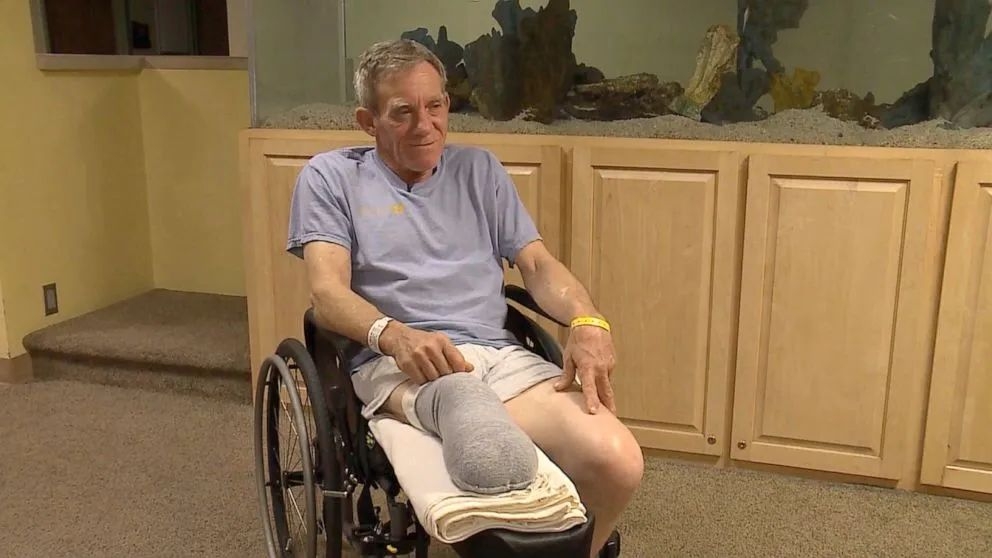
In 2019, 63-year-old Curtis Kessel was working on a farm near Pender, Nebraska, when his leg got caught in a grain auger. As the machine began to pull in his left foot, he had to act quickly to prevent further harm. Using a Swiss Army knife, he cut off the trapped leg, then crawled hundreds of feet to get a phone. Upon arrival at the hospital, medical personnel performed a debridement amputation, removing the part between his knee and ankle.
7. Ines Ramirez Perez, Who Performed Her Own C-Section
Ines Ramirez Perez, a 40-year-old woman, gave birth alone in a remote area of southern Mexico in March 2000. The nearest clinic was over 50 miles away, and she couldn’t reach it. After a difficult labor and having previously lost children, she drank some liquor, used a 6-inch knife to perform a self-C-section, and successfully delivered her baby. Both mother and child were safe.
It was reported that there were no witnesses during the surgery. A doctor who arrived 12 hours after the birth stated that the surgery was clearly not performed by someone with medical knowledge. There were no doctors or healers in the area who could have performed such an operation on her. Perez is considered the only woman to have successfully performed a self-C-section.
8. Amanda Feilding, Who Performed Trephination on Herself
In 1970, Amanda Feilding from Britain, out of interest in exploring deeper consciousness, decided to drill a hole in her own skull, a practice known as trephination. This surgery is one of the oldest known, dating back at least 7,000 years. Feilding believed it might increase brain blood circulation, though there was no evidence to support this.

She used a dental drill to make a hole in her forehead, with blood spraying from the wound, and she recorded the entire process. In 1978, this footage was shown at the Suydam Gallery in New York, where the gruesome images caused some viewers to faint on the spot.
Feilding later stated that it was not a difficult surgery; drilling into her own skull was a psychological battle, clearly going against the body’s instincts. Overcoming her mental barriers to do this was a significant achievement for her. Feilding later underwent another trephination, this time performed by someone else.
9. Peter Freuchen, Who Amputated His Own Leg
Danish explorer Peter Freuchen was known for his resilience. In the 1920s, after returning to his Arctic base following a severe blizzard, his left foot deteriorated and began to show signs of gangrene. With no doctor present, an experienced indigenous woman cared for him. Freuchen considered amputating his toes and eventually used a nail puller and hammer to knock them off.
Despite ultimately losing a leg, Freuchen remained active in the Danish resistance against the Nazis, helping Jewish refugees escape from Nazi Germany. He was once captured by the Nazis and sentenced to death but managed to escape. He also starred in movies and won the game show “$64,000 Question.” He even claimed to have used his own frozen feces to carve out an ice pit.
10. Mohar Vaid, Who Repaired His Own Torn Ligament
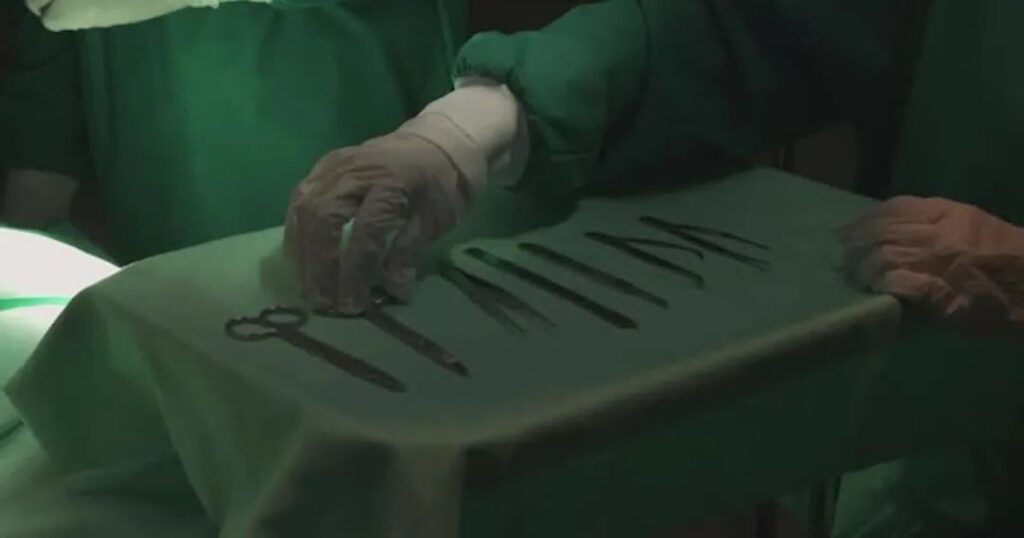
Ohio surgeon Mohar Vaid, without an emergency, performed surgery on his own hand out of curiosity. In August 2021, he arrived for a scheduled ligament repair surgery. After injecting a local anesthetic, he felt his hand go numb, describing it as feeling like it belonged to someone else. Vaid told the media that his thumb felt like it was someone else’s. He then took a scalpel and performed the surgery on himself, learning the steps from colleagues and suturing the wound.
11. Viktor Yazykov, Who Drained His Own Abscess
In 1998, Viktor Yazykov was competing in a single-handed yacht race, requiring participants to circumnavigate the world in nine months. In the middle of the South Atlantic, he injured his right elbow, which showed signs of severe infection. Unable to heal it himself, he contacted the race’s chief physician, Daniel Carlin, via email.
Yazykov felt his arm was heavy, and Carlin instructed him on how to drain the abscess through email, but due to the setting sun, Yazykov lost the solar-powered communication equipment’s signal, losing real-time guidance. He proceeded with the surgery using the race-provided first-aid kit.
After draining the abscess, Yazykov suffered severe bleeding due to the dilution of his blood from aspirin. He made a tourniquet from a bungee cord to stop the bleeding, but this could completely cut off blood supply to his arm, risking losing it. When communication was restored, Carlin instructed him to apply direct pressure to stop the bleeding. Ultimately, Yazykov recovered and continued the race.
12. Evan O’Neill Kane, Who Performed an Appendectomy on Himself
Pennsylvania surgeon Evan O’Neill Kane was not afraid of operating on himself. In 1919, for scientific research, he performed an appendectomy on himself because he was skeptical of general anesthesia and wanted to test the effects of local anesthesia. He also needed the surgery due to chronic appendicitis.
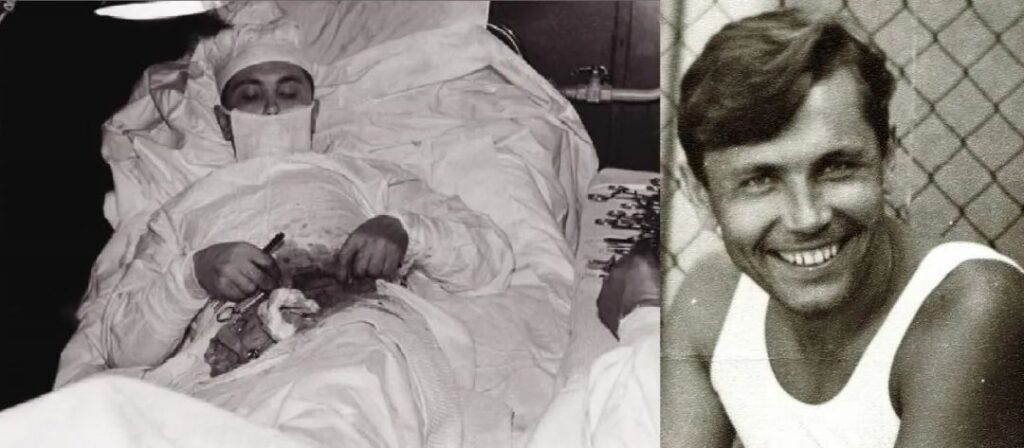
After the surgery, he said that by doing so, he fully understood the patient’s experience under local anesthesia, which was one of the reasons he performed the surgery on himself. Ten years later, at age 70, Kane treated a hernia caused by falling off a horse.
13. M. Alexander Farkas, Who Performed a Hernia Surgery on Himself
In 1909, 26-year-old Romanian surgeon M. Alexander Farkas removed a pigeon egg-sized inguinal hernia from himself. “Medical News” described this condition as “protrusion of abdominal contents through a weak point in the abdominal wall, causing pain and swelling in the inguinal area,” which is very painful. Farkas, after several attempts, found the correct injection point, and once the drug took effect, he sat up, cut into himself, and performed a one-hour surgery. Twelve days later, he returned to work.
14. Werner Theodor Otto Forssmann, Who Performed Cardiac Catheterization on Himself
In 1929, German physician Werner Theodor Otto Forssmann planned an experiment to check and repair a mitral valve defect using catheterization. He submitted the plan to the hospital’s chief surgeon, who rejected it. Forssmann proposed using himself as the subject, but was again rejected.
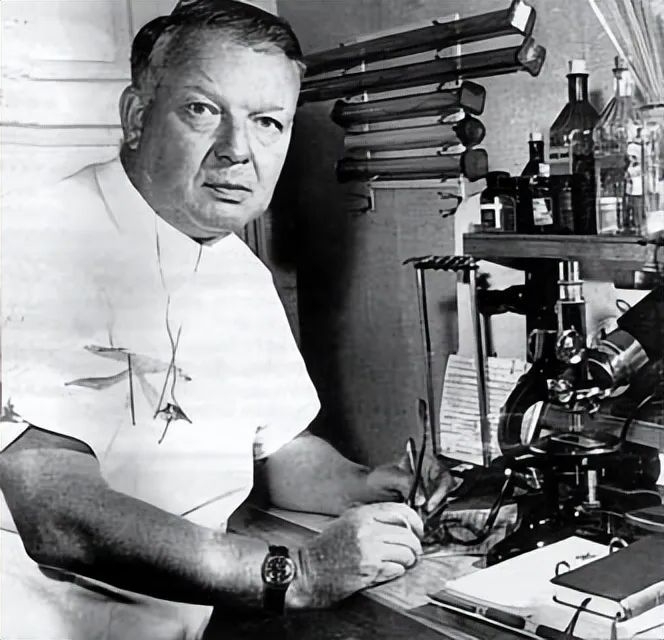
However, Forssmann did not give up; he found a nurse volunteer, but in the operating room, he pretended to operate on her while actually performing cardiac catheterization on himself. He then went to the X-ray department to check if the catheter had reached his heart (it hadn’t, requiring further insertion). Forssmann later won the 1956 Nobel Prize in Physiology or Medicine, along with André Frédéric Cournand and Dickinson W. Richards, for this innovation.



















